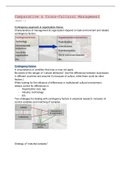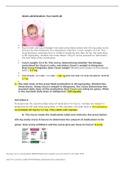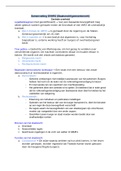Summary
Complete summary comparative & cross cultural management
- Course
- Institution
This document includes a detailed summary of the material discussed in this course. It includes lecture notes and book materials. This course is taught in the first semester of the second year.
[Show more]












